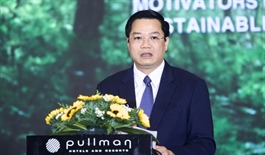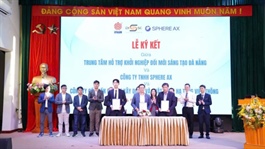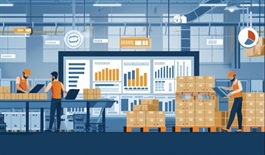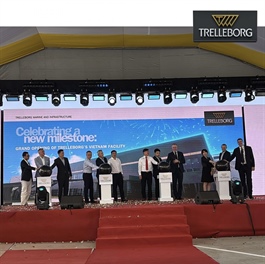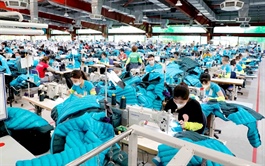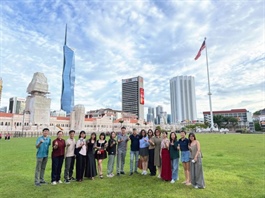Vietnamese industries aim to meet higher environmental standards
Vietnamese industries aim to meet higher environmental standards
Businesses will have to be ready to meet ESG standards, the EU’s Deforestation Regulation (EUDR), the Carbon Border Adjustment Mechanism (CBAM) and the domestic carbon market expected to pilot in 2026, they emphasised.

Workers at a wood processing factory in Bắc Ninh Province. Việt Nam's wood industry is expected to meet ESG standards, the EU’s Deforestation Regulation (EUDR), the Carbon Border Adjustment Mechanism (CBAM). — VGP Photo |
The global shift towards green supply chains is placing unprecedented pressure on Việt Nam’s export industries, particularly the wood, agriculture and processing sectors, experts warned at a workshop in Hà Nội on November 26.
Businesses must be ready to comply with ESG standards, the EU’s Deforestation Regulation (EUDR), the Carbon Border Adjustment Mechanism (CBAM) and the domestic carbon market expected to pilot in 2026, they emphasised.
Opening the workshop, Adapting to Global Green Supply Chains: Challenges and Opportunities for Việt Nam’s Exports, organised by the Viet Nam Chamber of Commerce and Industry (VCCI), Trần Thị Thanh Tâm, director of VCCI’s Centre for Supporting Small and Medium Enterprises, stressed that green transition had become a mandatory requirement to maintain orders and competitiveness, as the EU and the United States tighten environmental and supply-chain responsibility standards.
According to Associate Professor Vũ Anh Dũng of VinUniversity, the wood industry – one of Việt Nam’s key export pillars – is facing mounting pressure from non-tariff barriers and new technical regulations. In 2024, Việt Nam’s wood and wood product exports reached US$14.7 billion, nearly 70 per cent of which came from finished furniture. The United States accounted for around 55 per cent of the total value, while the EU contributed roughly $500 million.
Although the EU-Việt Nam Free Trade Agreement has eliminated tariffs on many product groups, compliance costs have become the biggest challenge for exporters. Enterprises must meet increasingly complex requirements related to timber legality verification, FSC or PEFC certification, chemical testing under REACH, and strict responsibilities under EUDR, including GPS-based traceability for each plot of land.
From May 2025, Việt Nam will be classified by the EU as a low-risk country, reducing inspection rates to around 1 per cent. However, this benefit only applies when exporters provide full documentation and traceability data. EUDR requires proof that products are not linked to deforestation after December 31, 2020, along with precise coordinates and a declaration of negligible risk. This remains a major hurdle for thousands of small processing facilities that lack digital tools, data systems and standardised traceability platforms.
Alongside rising export-market pressures, Việt Nam is approaching a significant turning point with the planned launch of its domestic carbon market. Economist Lê Duy Anh said the 2025–28 period would focus on developing technical infrastructure, a national registry, quota-management software and mechanisms for carbon credit trading and offsetting. Full operation and quota auctioning are expected from 2029.
Enterprises capable of early emissions measurement and reduction will gain dual benefits: maintaining orders from major markets such as the EU, the United States and Japan, and generating carbon credits from energy-saving measures, renewable-energy use or improved waste management. According to IFC recommendations, businesses can save 10 to 20 per cent of energy costs through systematic measurement and optimisation.
Small- and medium-sized enterprises (SMEs), however, face major difficulties due to the lack of emissions-data systems and the high cost of greenhouse-gas inventories. Currently, only two to three organisations in Việt Nam are capable of conducting inventories to international standards, forcing many SMEs to sell carbon credits through intermediaries, which reduces revenue and discourages green investment.
Experts suggested that State policies could further support exporters by reducing corporate income tax for certified deforestation-free products, exempting VAT on machinery and equipment for sustainable transition, and establishing shared compliance-cost groups within industrial clusters to lower certification and inspection expenses for SMEs.
Speakers concluded that ESG, EUDR, CBAM and the emerging carbon market are becoming new standards rather than optional commitments. Green transition, they noted, should be seen not as an added cost but as a key driver for sustaining and expanding Việt Nam’s export market share. The preparedness of enterprises in data, traceability systems and carbon-measurement capacity will determine their competitiveness in the global race towards greener supply chains.
- 16:47 26/11/2025



